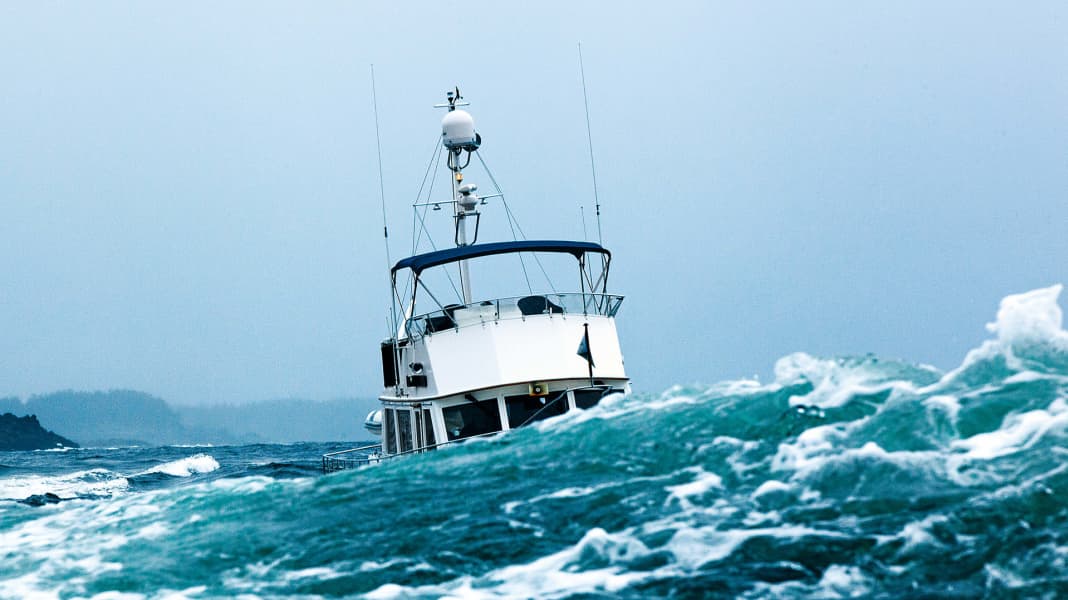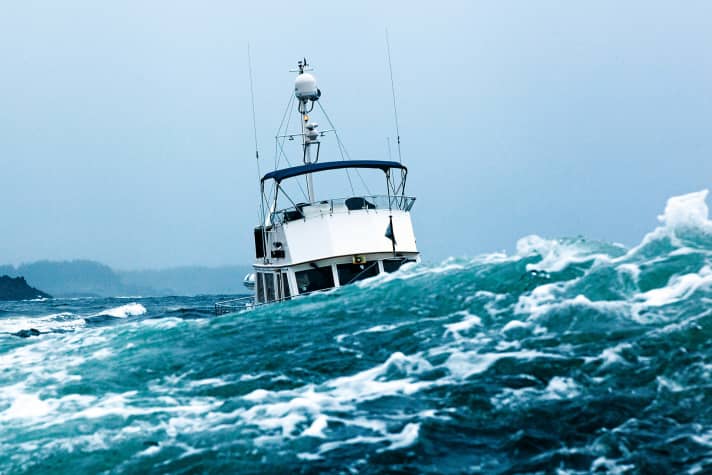

Seas and safety at sea have always been an extraordinary challenge for designers. Large heeling amplitudes in cross seas not only jeopardise the boat, but also place high demands on the crew. For this reason, passenger ships in particular are now equipped with effective roll damping systems. However, the roll damping methods described here cannot prevent other vibrations such as diving, pitching and yawing.
Roll damping is of particular interest for larger motor yachts, most of which are displacement vessels. There are hardly any suitable roll damping systems available for smaller boats under 10 metres in length. Fast motorboats are dynamically stabilised when planing, so there is little interest in corresponding roll damping measures anyway. However, at high speeds in rough seas, considerable acceleration forces must be expected, which can only be mitigated somewhat by shaping the boats accordingly.

Which boat shapes influence rolling?
Simple design features are an indication of the behaviour of the boat in rough seas. In this respect, for example, an articulated frame boat is more favourable than a boat with a round frame. Large rudder surfaces, a pronounced keel or V-frame additionally dampen the roll amplitudes. Less commonly used for better roll damping are so-called rocker keels on the chine, which also significantly increase the centre of gravity of a boat. Another simple measure for larger boats is the use of a support sail. Finally, the boat designer has the option of increasing the radius of gybe. This involves achieving the most balanced mass distribution possible across the volume of a boat.
Roll damping systems
The safety of a boat underway can be increased by a roll damping system. However, to avoid misunderstandings, it must be emphasised that in heavy seas, all roll damping methods cannot rule out stability accidents, including capsizing. Just how topical this issue is in commercial shipping is shown by the many subsidised research projects that are currently dealing with this topic. Every year, many containers are lost due to excessive rolling movements of ships. The fact that these floating, barely visible containers are a source of danger for recreational shipping is an additional problem.
Each boat has its own roll period, the time period of which is easy to determine. For motor yachts of 10 to 20 metres in length, it is usually between 2 and 5 seconds. If the wave frequency and roll period of the boat match, considerable roll amplitudes are achieved even in low swell. Knowledge of the roll period and the roll characteristics of a yacht is therefore a prerequisite for controlling the damping systems with the aid of roll sensors. The most widely used roll damping systems are ...


DENTECHTNIK REPORTCAN BE FOUND IN THE CURRENTJULY ISSUE OF BOOTETHE ITFROM 24 JUNE IN THE TRADE.
